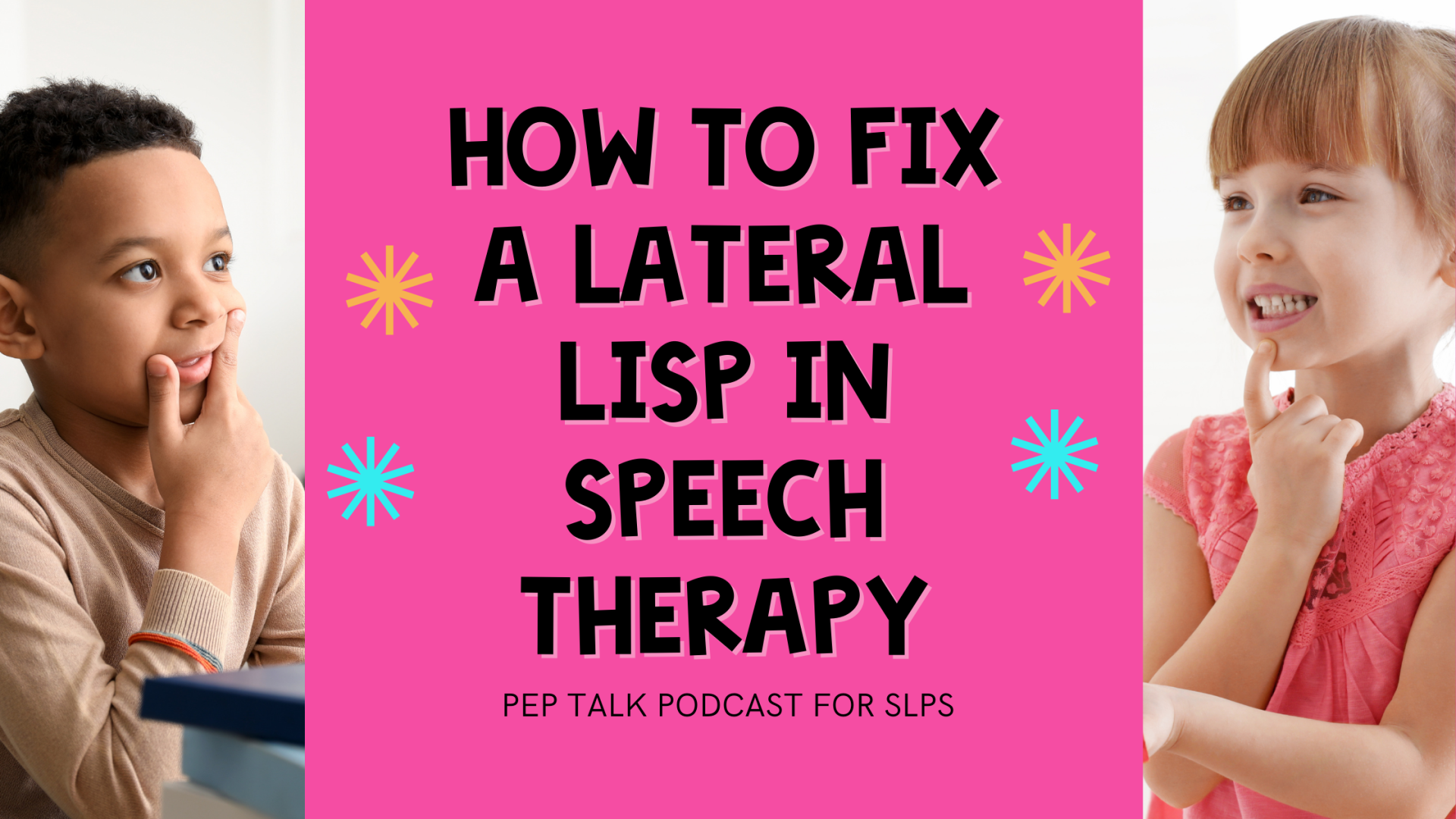
Speech disorders such as lateral lisp can impact a person's ability to communicate effectively and may lead to frustration and difficulty in social situations. Speech-Language Pathologists work with clients to improve their communication skills and reduce speech disorders like lateral lisp. In this blog post, we will explore how SLPs use various techniques and frameworks, including phonetic shaping, cognitive reframing, and complexity theory, to help clients with lateral lisp. We will discuss how these techniques can help clients produce non-lateral speech sounds, reframe their thoughts about their speech disorder, and simplify the intervention process. With the help of skilled SLPs and evidence-based techniques, clients can make meaningful progress and improve their quality of life.
A lateral lisp is a type of speech disorder that affects the production of the /s/ and /z/ sounds. This can sound like a "slushy" sound. What exactly is a lateralized sound? A lateralized sound means that some part of the tongue tip or tongue blade is gaining contact with the palette instead of the sides of the tongue. So the sound is escaping laterally. In order to correct this, we have to teach the person with the lateral lisp to reverse this pattern. This type of speech disorder can affect a person's ability to communicate effectively, causing frustration and difficulty in social situations.
In this article, we will discuss how SLPs can use phonetic shaping, cognitive reframing, and complexity theory in speech therapy interventions for clients with lateral lisp.
This means to figure out if there is a sound that the individual can produce correctly that is similar in shaping to the sound that you are trying to elicit. Frequently, this is the /t/ or /sh/ sound. Try it and ask yourself, are the sides of your mouth anchored up against your molars? If the individual can produce a really clear /t/ sound, then this is a good sound to use for phonetic shaping. Shape it into an "s" by teaching them to hold the sound out.
Reframe the problem for the individual. Pretend you are teaching a "new sound" that they've never made before. If they keep producing /s/ incorrectly, try telling them that this new sound (really the /s/) is new and should be produced differently. Once they figure out how to make that “new sound,” then help them figure out how to replace it. This concept works really well for really young students and older students who have been in speech forever working on the same sound. Both tips can be used in tandem with each other when fixing a lateral lisp.
Complexity theory is a framework used in speech therapy to simplify target selection and intervention. This theory emphasizes the importance of selecting functional and relevant speech targets that are achievable and meaningful for the client. By focusing on these targets, SLPs can simplify the intervention process and increase the client's success in achieving their speech goals.
SLPs can help clients with lateral lisp achieve their speech goals and improve their overall communication skills. With the use of these techniques and frameworks, clients can learn to produce non-lateral speech sounds, reframe their thoughts about their speech disorder and simplify the intervention process. Most of all they can gain some confidence back by finally eliminating that pesky lateral lisp!
On the episode of the Pep Talk Podcast for SLPs below, Michelle Andrews interviews Amy Graham, M.S., CCC-SLP who has the best tips and tricks for eliminating the lateral lisp altogether-sometimes even in minutes! Listen along and be sure to take the quick quiz afterwards to earn one hour of professional development (1 PDH) that goes towards your ASHA certification maintenance hours.
Episode #12: How to Finally Eliminate the Lateral Lisp in Speech Therapy



